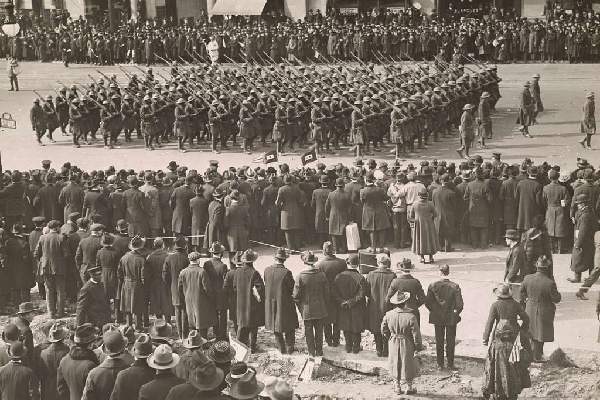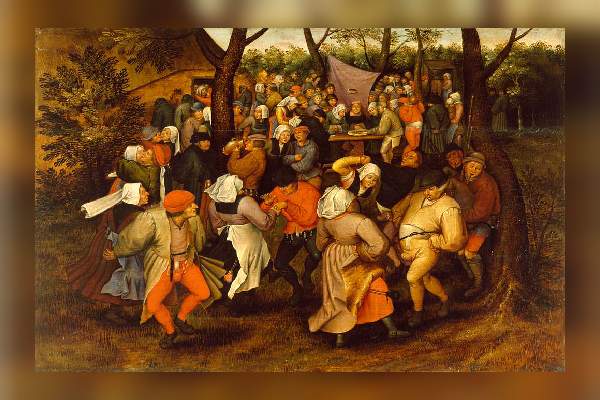Everything About 1676 Bacon’s Rebellion: Armed Revolt Against Governor Berkeley
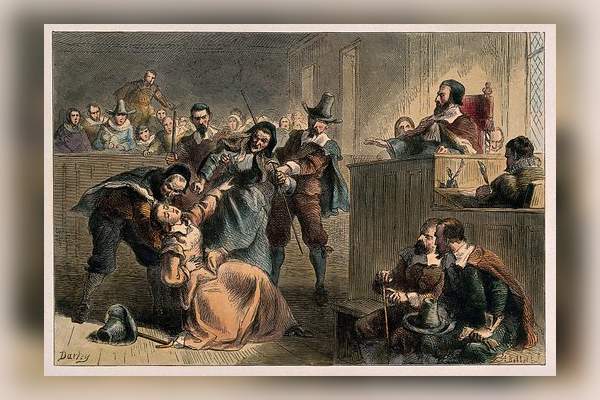
1676 Bacon's Rebellion. Image Source: Wellcome Collection.
The 1676 Bacon’s Rebellion accompaniments the statement, “When the people fear the government, that’s tyranny, and when the government fears the people, that’s freedom.” Named after its colonist leader, Nathaniel Bacon, it was one of North American colonies’ first rebellions in which dissatisfied frontiersmen participated.
During the late 17th century, the Virginia colony saw a class divide where political, economic, and social apprehensions tormented the region. Further, when Governor William Berkeley refused to dispel the hostile Native Americans out of Virginia, a violent revolt occurred, which became a crucial event in colonial America’s history.
Although considered a build-up for the American Revolution (1775-1783), historians later agreed that the rebellion was just a power struggle between two uncompromising leaders than a glorious fight against dictatorship. This article will provide information on everything you need to know about the Rebellion, including its causes, key events, and long-term impacts and legacy.
Power Struggles Between Nathaniel Bacon and William Berkeley
Before diving into the topic, let’s know first about the pivotal characters involved in the violent riot, Nathaniel Bacon and Sir William Berkeley. For your information, Bacon was the cousin of Berkeley by marriage, and he arrived in Virginia for a land grant and a seat on the Governor’s Council.
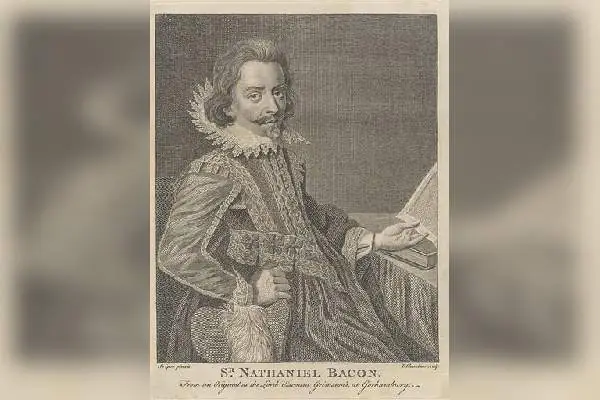
Nathaniel Bacon. Image Source: Look And Learn.
Bacon was born on January 2, 1647, in Suffolk, England, to wealthy landowner parents Thomas Bacon (father) and Elizabeth Brooke Bacon (mother). After traveling around Europe and marrying Elizabeth Duke, he settled in Jamestown. Upon arriving in Virginia, Bacon bought two frontier plantations on the James River.
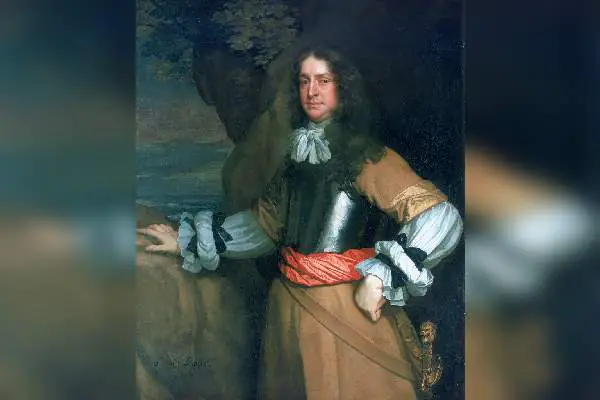
William Berkeley. Image Source: Picryl
Meanwhile, Berkeley was born in 1605 in Middlesex, England. He was an English colonial administrator who served as the governor of Virginia from 1660 to 1677. William implemented policies that planted objections among the colonists and sparked Bacon’s revolt.
ALSO READ: Remembering The Legacy of Harlem Hellfighters: The Courageous African-American Heroes in World War I
The Genesis of the 1676 Bacon’s Rebellion
During the 1650s, colonists arrived on borderland in the Northernmost part of Virginia, which was the land reserved by the Crown for Native Americans since 1634. People from several Native American tribes moved to the region and joined the local tribe. In mid-1666, the colonists declared war on them, and by 1670, they had chased away most of the ‘Doeg’ native people out of the Virginia colony.
During 1674, the local Virginian people demanded to either drive out or kill the Native Americans. Additionally, they protested against corruption in the government of Berkeley. Many settlers believed that the colonial government, led by Berkeley, was not making enough efforts to protect them.
By the late 17th century, the Virginia Colony was characterized by a complex social structure. At the top were wealthy planters, many of whom held positions in the colonial government. However, a growing disparity between the elites and the lower classes, including impoverished farmers and former indentured servants, fueled discontent among the disenfranchised.
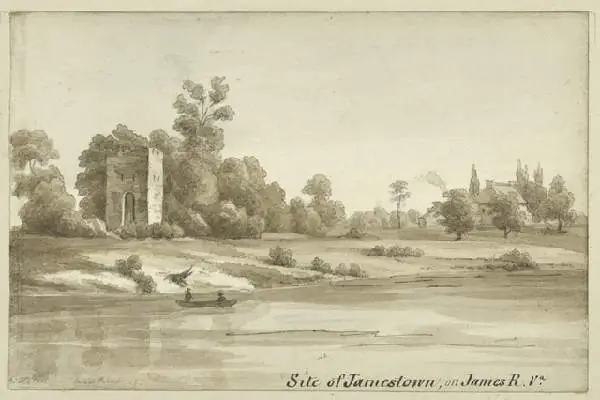
James River. Image Source: Picryl
Several fights occurred between the Native Americans and the whites, in which many people lost their lives. Likewise, Bacon emerged as a rebel leader when his plantation overseer was killed in James River. When Bacon asked for a military commission to attack all Native Indians, Berkeley refused the grant. This led Bacon to assemble his own force of 400-500 men and move up the river to attack the tribes.
The restless farmers took matters into their own hands, and in 1676 a group of poor farmers led by then-29-year-old Nathaniel massacred local Indians. Afterward, the group then marched to Jamestown and burned the Capital to the ground. It was obvious that Bacon was able to organize people through their resentment.
Political Prohibition and Native American Invasion
Another main cause of the Virginia rebellion was the political exclusion of the borderline settlers from Virginia’s governing elite. The colonial government, dominated by wealthy planters, imposed high taxes and failed to provide adequate protection against Native American raids. This led to a sense of resentment and a demand for greater representation and action against Native American threats.
The political prospect of colonial Virginia was set apart by a small dominating group of wealthy planters who held higher positions. The frontier settlers, who lived on the edge of the colony, felt marginalized and underrepresented in the colonial government. They were dissatisfied with the political exclusion and sought a more active role in decision-making.
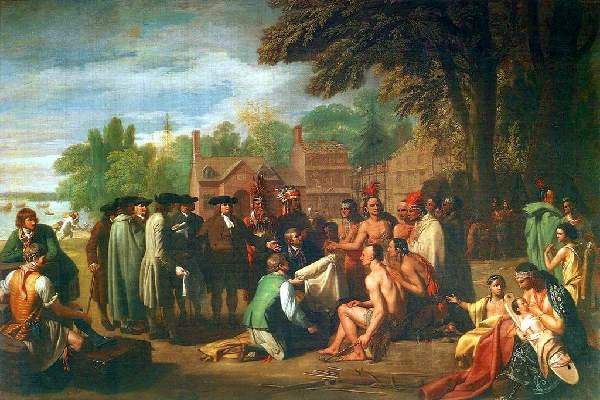
1676 Bacon’s Rebellion. Image Source: NDLA
The frontier settlers faced frequent attacks from Native American tribes, and they believed that leader Berkeley did not take adequate measures to protect them. The settlers felt vulnerable and demanded stronger action against the Native American threat.
There was a perception among the settlers that Governor Berkeley’s government was corrupt and favored the planter elite. The chief granted special privileges to his allies, leading to a sense of inequality and frustration among those who felt excluded from the political process.
You might want to read about the enchanting Gullah Geechee Culture and how they are preserving values and heritage.
Economic Deprivation
The economic situation in Virginia was challenging for many small farmers, including those on the frontier. The price of tobacco, the primary cash crop, had declined, leaving farmers in debt and struggling to sustain their livelihoods. The wealthy planters, who controlled the trade and economic activities, were accused of exploiting the situation for their own benefit.
There were economic tensions between the wealthy planter elite, who dominated the political scene, and the poorer settlers. The planters controlled the lucrative tobacco trade and held significant power. The poorer settlers, who were often landless or had limited access to land, felt oppressed by high taxes and restrictions on land settlement.
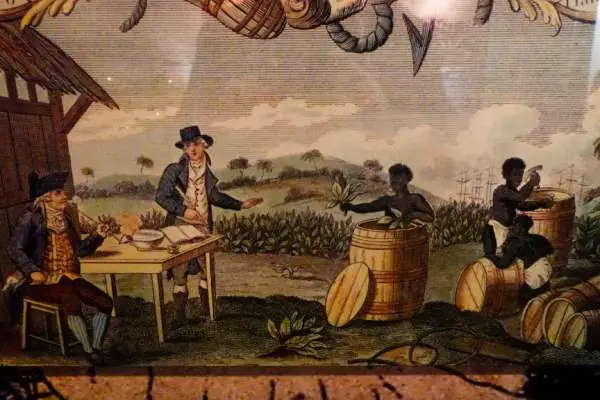
Bacon’s Rebellion. Image Source: World History Encyclopedia
Another significant factor was the economic disparity between the coastal elites and the struggling farmers of the backcountry. The price of tobacco, the primary cash crop, had dropped, leaving many small farmers in debt and facing economic hardship. Meanwhile, the wealthy planters held a monopoly over trade and exerted significant influence over the colonial government, exacerbating the divide between the wealthy and the less affluent.
Colonialists in Virginia in the 17th century used tobacco as a form of currency due to the high cost of British taxes at the time. Smaller planters found it difficult to make ends meet, whereas wealthy plantation owners were generous enough to waive the assessments. Black people, both free and enslaved, shared a situation with indentured workers of European heritage, both past and present. The wealthy owned the land; the lower classes worked it.
The Course of the Rebellion: Escalation and Suppression
Bacon’s forces conducted raids against Native American tribes and attacked their villages. The rebellion gained momentum, and Bacon and his followers protested against the government’s policies. Governor Berkeley initially declared Bacon a rebel, but as the rebellion grew, he was forced to grant Bacon a commission to fight against the Native Americans. Bacon’s forces achieved some successes, but they also engaged in acts of brutality against Native Americans and their allies.
In the midst of the rebellion, Bacon unexpectedly passed away due to dysentery in October 1676, and with their leader gone, the rebellion lost momentum, and Governor Berkeley regained control. Berkeley suppressed the uprising by arresting and executing several rebels.
Key Events of the Rebellion
In 1676, Bacon launched a crusade with a substitute army against the Native American tribes that had been attacking the local frontier settlers. However, his actions soon escalated into a broader conflict against the colonial government itself. Afterward, in the month of July, Bacon and his followers burned the capital of Virginia, Jamestown.
In addition to having corrupt officials removed, they requested that all white males, regardless of property ownership, be granted the right to vote. The colonial authority branded Bacon a traitor and an outlaw because of the rebellion’s expanding impact.
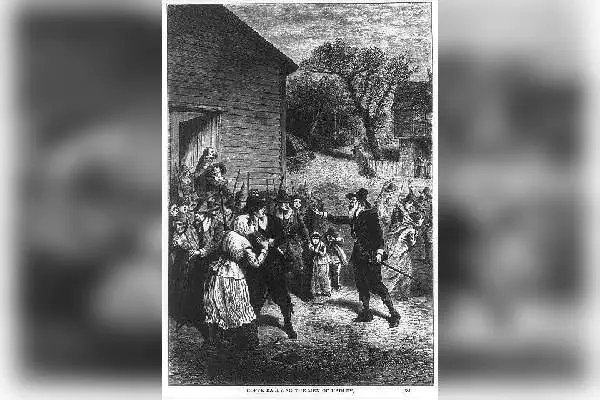
Bacon’s Rebellion. Image Source: Picryl
In the end, Berkeley’s forces prevailed, and the rebellion was suppressed. Many of Bacon’s followers were either killed, captured, or fled. When Bacon’s men engaged the troops of Governor William Berkeley, the rebellion reached its height in September 1676. Even though Bacon passed away during the war, the uprising persisted for a while.
Legacy of the Great Revolt
Although historians argued that 1676 Bacon’s Rebellion was a power struggle, many people believe Bacon was a true patriot, and his revolt was a build-up to the American Revolution. Additionally, the Virginia colonial legislature approved the Virginia Slave Codes of 1705, which were intended to set apart the white and black races socially.
The impacts of the Virginia Rebellion were significant as they exposed the deep-rooted socio-economic tensions within the colonies. Additionally, it highlighted the growing divide between the wealthy plantation frontiers and the struggling frontier farmers. The event pointed to the need for unity and cooperation among the colonies to address shared concerns, laying the groundwork for future collaborative efforts. It remains a crucial event in the history of colonial America as it played a role in shaping subsequent events, such as the formation of American identity.
Bacon’s Rebellion – Historic Jamestowne Part of Colonial National Historical Park (U.S. National Park Service). (n.d.).
Africans in America/Part 1/Bacon’s Rebellion. (n.d.).
[email protected]. (2022, February 5). Bacon’s Rebellion for APUSH – Fighting for Freedom. Apprend.
American History Central. (2023, June 14). Bacon’s Rebellion, Summary, Facts, Significance, APUSH, Timeline.
Bradstreet, S. (2017, September 12). Bacon’s Rebellion: APUSH Topics to Study for Test Day. Magoosh Blog | High School.
Mark, J. J. (2023). Bacon’s Rebellion. World History Encyclopedia.
Why America’s First Colonial Rebels Burned Jamestown to the Ground. (2019, August 2). HISTORY.
The Editors of Encyclopaedia Britannica. (1998, July 20). Sir William Berkeley | British colonial official. Encyclopedia Britannica.
The Editors of Encyclopaedia Britannica. (1998a, July 20). Nathaniel Bacon | Biography, Rebellion, & Facts. Encyclopedia Britannica.
Simba, M. (2022, January 14). Bacon’s Rebellion (1676)
Did you notice an error ?
Please help us make corrections by submitting a suggestion. Your help is greatly appreciated!





